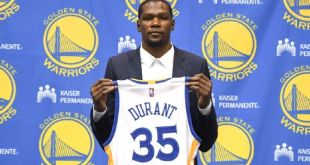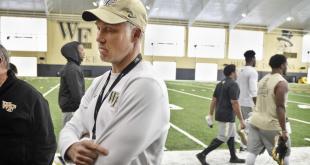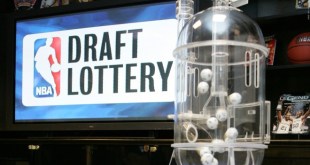The NBA is in the midst of an unprecedented three-year transition during which its salary cap will nearly double from $63 million to around $102 million, due in large part to a broadcasting contract worth billions of dollars. This year alone, the cap jumped from $70 million to $94 million. What have we learned from a free agency unlike any other we’ve seen, and how will this unusual offseason impact the league’s looming CBA negotiations?
Free Agency Free-For-All
The NBA actually tried to avoid this situation by proposing a cap “smoothing” that would switch the large cap jumps into more gradual increases. However, the NBPA said no thanks, preferring for players to receive as much money as possible as soon as possible. The result has been the most lucrative free agency in history for NBA players. This year’s free agency witnessed $3.3 billion in contracts for players. Player salaries averaged around $11 million, and about 70 percent of free agents left their previous teams.
To fans, it may seem like teams are throwing around money recklessly. And it might seem unfair that players are earning far more now than they did just a year ago, but that’s how the business of the NBA works. The league generates a certain amount of revenue which is split between players and owners. When the revenue pie grows, the slices that go to the players get larger, just as the slices that go to the owners do. The 1980s Celtics-Lakers rivalry, Jordan’s Bulls, and the rise of cable television led to booming business for the NBA throughout the 90s, generating more revenue for owners and higher salaries for players. Now, the pervasiveness of social media spoilers and DVR-like playback technology have put a premium on live NBA-viewing (and all sports viewing, for that matter), generating broadcasting contracts that have generated billions for both teams and players. A rising tide lifts all boats.
Another feature of this year’s free agency is that top players are joining together. Teams have always sought to accumulate talent, but this year’s free agency has solidified the trend that LeBron James made infamous in 2010 of elite players using free agency to join or create superteams. A byproduct of that trend is that big markets aren’t necessarily the big attractions they used to be. As elite players gravitate toward each other, rosters and title opportunities appear to be more important than ever. Oakland has become more attractive than Los Angeles, San Antonio more attractive than Chicago, and Cleveland more attractive than New York.
Kevin Durant’s move featured both of these NBA trends to some extent. Rather than try to make things work in Oklahoma City, he sought out the best chance for him to win a title by associating with a more talented cast of stars, much as LaMarcus Aldridge did by leaving Portland for San Antonio last year. While Oakland is a “bigger” market than Oklahoma City, it’s not one of the traditional big markets of the league. And it is certainly not a bigger market than Los Angeles, New York, or Washington, D.C., whose teams could not even get a meeting with Durant.
Impact on CBA Negotiations
Technically, the current NBA CBA runs through the 2020-2021 season. However, both the NBA and NBPA have the option to terminate the CBA on June 30, 2017, by notifying the other party no later than December 15, 2016. In the context of one of the more unusual offseasons in NBA history and looking at the impending superteam to beat all other superteams, it seems likely that NBA owners will want to renegotiate the CBA. In light of this year’s free agency, what will the parties look to renegotiate when it comes to how the league is structured in its collective bargaining agreement?
The league could consider eliminating the “max” contract that was created after Kevin Garnett’s $126 million megadeal in 1997 scared owners into creating a ceiling for player salaries. There are reasons for both sides to be interested in this change. Players may want to establish more of a truly free market, especially for the players who are the face of the league and its teams. Of course, a real free market is not possible while the salary cap exists (even in its current “soft” form), but without a maximum contract, the top the market could expand, allowing elite players to make more and good players to make closer to what the current “max-level” salaries are. On the other hand, eliminating max contracts could potentially reduce the pot of money available to pay other players on the roster, and the union has recently leaned toward prioritizing benefits for the far more numerous rotation players, rather than the comparatively fewer stars.
On the other side of the negotiating table, owners may be more willing to pay stars who bring revenue and fan interest to teams (especially in smaller markets), rather than risk overpaying less-talented starters or bench players who could saddle the team with bad contracts for years at a time. And owners concerned about the rise of superteams would likely support a measure that would make it cost-prohibitive for one team to pay two, much less three or four, superstars. Durant probably can’t go to the Warriors in a world in which the max contract doesn’t exist to reduce elite player salaries.
A less drastic measure to reduce the possibility of superteams would be to reduce teams’ cap flexibility. The NBA’s current soft salary cap has a number of exceptions that allow teams more wiggle room in cap space before paying the luxury tax. The league tried to make the luxury tax more punitive in the current CBA, but those changes were mitigated by the cap spike this year, making it easier for teams to avoid high luxury tax bills. Reducing some of the cap exceptions could be an achievable compromise to allow players to continue to make similar amounts while giving owners confidence that top teams will have fewer options in dodge the luxury tax.
With player salaries rising, league owners will likely also focus on revenue split negotiations. Owners will undoubtedly claim that some franchises are still operating at a loss, as they claimed during the 2011 negotiations. NBA Commissioner Adam Silver recently claimed almost one-third of franchises are operating at a loss (though how the league calculates that is disputed, and operating budgets don’t account for increases in franchise value). That will be an even harder claim to make now, with league revenue booming, franchise values skyrocketing, and owners having to give an estimated $500 million check to players as a shortfall payment. And players already took an enormous seven percent pay cut in the current CBA when it comes to dividing basketball-related income. The union will no doubt attempt to resist any further losses in revenue sharing. One good way for fans to contextualize these new, higher player salaries is to look at the percentage of the cap each player is costing a team, rather than the total dollar figure.
This year’s cap jump also frustrated another goal owners had for the current CBA: helping teams retain their free agents. Rising revenue and the widespread availability of max cap space meant that players wanted to sign shorter contracts in order to capitalize on larger contracts a year or two later rather than take advantage of their previous team’s ability to offer them extra contract years. With the vast majority of free agents leaving their previous teams, owners could certainly look at ways to try to further restrict player movement and enhance teams’ ability to retain their players.
Don’t Overreact
There is a danger of overreacting to one cap spike and the rise of perceived superteams, especially when it comes so close to the CBA opt-out deadline. Silver himself has said he thinks superteams are bad for the league, but admitted that this summer was an “anomaly.” It’s important to remember that this year’s free agency was a one-time event. Although it is part of a significant three-year increase, this year’s $24 million cap jump is far more than next year’s expected leap of $8 million. Initial assumptions were that the cap could jump as much as $15 million next season, but the NBA has recently revised its cap projection down to $102 million. So this really is a one-time event. The NBA and NBPA could easily negotiate to prevent future cap spikes like this in the future, perhaps by inserting a smoothing clause into the CBA, similar to what the NBPA rejected this time around.
Although teams that signed good players to long-term contracts before this year’s free agency have a limited advantage for now, once those contracts expire and cycle out of the league, everyone will be on the same playing field in the NBA. And when superteams have to renegotiate player salaries without an enormous cap jump, they will be forced to make tough decisions about whom to cut from their rosters. Already the downward revision of next year’s cap figure will require Golden State to consider whether it will be forced to give up Andre Iguodala, and that’s before Stephen Curry gets a contract commensurate with his value.
Many will complain about competitive balance and a league dominated at the top by only three realistic championship contenders, including one that at this moment seems unbeatable. But as we learned this playoffs, anything can happen in the NBA. Midway through this season did you think the Thunder would be minutes from eliminating the Warriors? Or that the supposedly dysfunctional Cavaliers would beat them without Kevin Love playing well at all? One injury or one series adjustment can be the difference between history and failure.
But in any case, the real issue isn’t the dominance at the top of the league; it’s the devastation at the bottom. Having dominant teams that generate both hatred and bandwagon fans is good for the league in terms of fan interest, ratings, revenue, etc. And having a small number of teams competing against each other for the championship has historically been the status quo for the NBA. The Lakers and Celtics won every title but one from 1980-1988. The Bulls and Rockets won every title from 1991-1998. The Spurs and Lakers won nine of twelve titles from 1999-2010. The Heat were seven minutes away from a sweep of the Mavs in 2011 and three straight championships. If you really want to change competitive imbalance, change the way the draft lottery works and discourage tanking, to motivate teams to compete.
While this year’s free agency raises concerns, especially for owners, it is not necessarily something the parties should overly focus on when negotiating a long-term agreement. Owners and players will have to consider how much they want to push for CBA changes based on this unique situation when there are so many other issues on the table, including the revenue split percentage, length of the season, and minimum entry age. The NBA is undoubtedly happy to be generating more revenue than ever before, but more money will create more problems when the league’s two parties sit down to the negotiating table later this year.
 The Sports Esquires Putting Sports on Trial
The Sports Esquires Putting Sports on Trial




